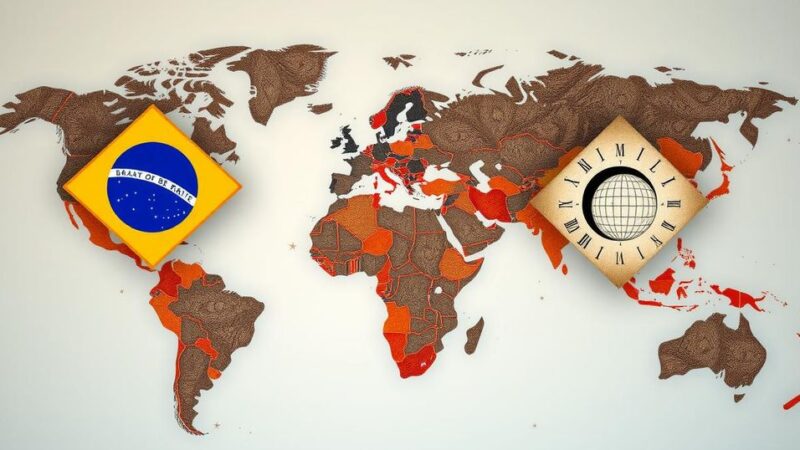Recent developments by Chinese scientists using the Low Latitude Long Range Ionospheric Radar (LARID) have resulted in the detection of plasma bubbles above the Egyptian pyramids and Midway Islands. This radar, operational since last year, has a range of 9,600 kilometers and utilizes high-power electromagnetic waves to analyze these phenomena, which can disrupt satellite communications. The detection signifies a major leap in understanding and monitoring, with implications for both scientific and military applications.
Chinese scientists have recently made significant advancements in radar technology, utilizing the Low Latitude Long Range Ionospheric Radar (LARID), which successfully detected plasma bubbles above the Egyptian pyramids and the Midway Islands. The radar system, developed by the Institute of Geology and Geophysics under the auspices of the Chinese Academy of Sciences, was installed last year and has since unfolded an array of fascinating findings. It demonstrated the capability to identify plasma bubbles—unusual weather phenomena that can disrupt satellite communication and GPS systems by interfering with the ionosphere’s charged particles. On August 27, it was reported that this new radar achieved the largest detection of plasma bubbles to date, which were initiated by a solar storm in the previous November. The radar signals are observable across vast distances, from North Africa to the central Pacific Ocean, enabling scientists to monitor the formation and dynamics of plasma bubbles with unparalleled precision. Located on Hainan Island, the LARID radar boasts an impressive range of 9,600 kilometers, spanning from Hawaii to Libya. This system operates differently from traditional radar, employing high-power electromagnetic waves that reflect between the ionosphere and the Earth’s surface, thus allowing detection of objects beyond the horizon. It utilizes a frequency range of 8-22MHz and consists of 48 transceiver antennas specifically designed for plasma bubble detection, with a fully digital phased array system permitting immediate operational adjustments. The initial detection capability of LARID was 3,000 kilometers. However, through enhanced operational expertise and innovations such as advanced signal coding and geophysical simulation models, the radar’s range has tripled in under six months. The significance of this advancement cannot be underestimated, particularly in light of the challenges posed by plasma bubbles to modern military operations. The rarity of large-scale, prolonged observation facilities over oceanic areas has historically impeded comprehensive understanding and early warning systems. In response to this, Chinese researchers have advocated for the establishment of a network comprising three to four LARID-like radars situated in low-latitude regions worldwide. Moreover, the military applications of such radar technology are evident; China’s military has deployed similar over-the-horizon radar systems capable of detecting advanced targets, including F-22 stealth fighters, indicating their potential for higher-resolution military uses.
Radar technology has become increasingly pivotal in the realm of atmospheric observation, particularly with regard to understanding phenomena that can affect communication and navigation systems. Plasma bubbles are an aeronomical phenomenon associated with disturbances in the ionosphere, which can degrade the reliability of satellite signals. This becomes critically relevant not only for civilian applications but also for military operations. The advancement represented by LARID situates China among the forefront of nations developing technologies capable of long-distance atmospheric monitoring, thereby enhancing both scientific inquiry and defense strategies.
The successful detection of plasma bubbles by China’s LARID radar represents a groundbreaking achievement in radar technology and atmospheric science. With its extended range and advanced capabilities, LARID not only enhances scientific knowledge regarding geographic atmospheric phenomena but also underscores the strategic importance of such technological advancements in military contexts. The proposed network of similar radars worldwide could potentially revolutionize early warning systems, significantly improving both civilian and military operational resilience against atmospheric disturbances.
Original Source: www.ndtv.com







